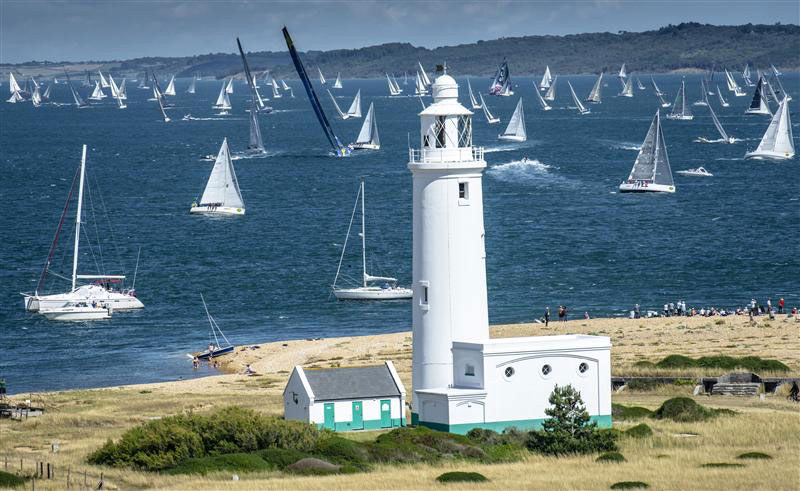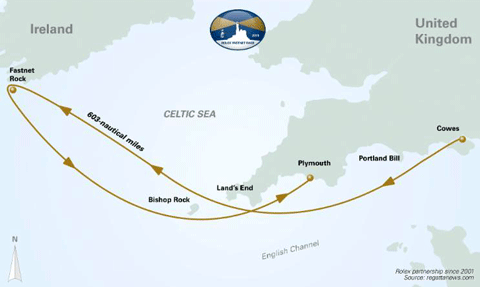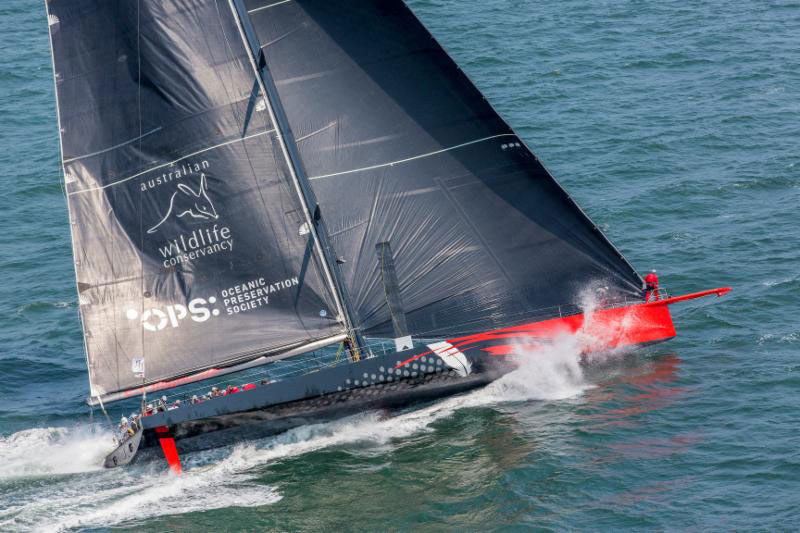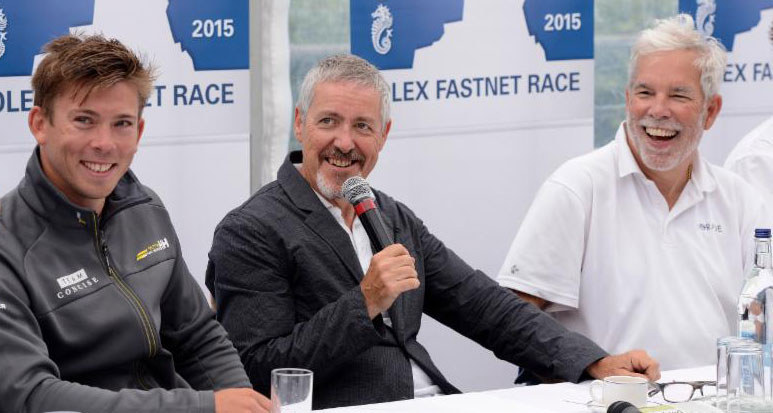
Rolex Fastnet Starts Sunday

The 46th biennial Rolex Fastnet Race will start this Sunday on the Solent in Cowes on the Isle of Wight. With a record fleet of 370 yachts representing 25 countries on the startline, it will be spectacular to watch. The Royal Ocean Racing Club, which was founded after the first Fastnet 90 years ago, will conduct the start from the clubhouse of the Royal Yacht Squadron, which is celebrating its bicentennial this summer.

Although the 603-mile Fastnet became infamous for violent conditions after the devastating 1979 edition in which 15 sailors and 3 rescuers perished, the forecast for this year’s edition is the polar opposite. "It is looking very light at the start," says RORC Racing Manager Nick Elliot, "but there is a good possibility for a light sea breeze as the afternoon wears on." RORC CEO Eddie Warden Owen advises: "In light airs, it is as demanding as it is in strong winds. Going backwards is slow — if you really want to win this race you are going to have to be good at kedging!"
Ken Read, skipper of Jim and Kristy Hinze Clark’s 100-ft Comanche, technically the fastest monohull entry, agreed: "I have never anchored more in my life than in this race! But we all have to play the same game. Whatever the breeze is we just have to adapt."

Other maxis to watch include Mike Slade’s Farr 100 Leopard, sailing in her fifth consecutive Fastnet, and the 80-ft trimaran Prince de Bretagne, which will be chasing the world’s fastest offshore boat, Dona Bertarelli and Yann Guichard’s 130-ft trimaran Spindrift 2 (aka Banque Populaire V).
In addition to the IMOCA Ocean Masters 60s, 59 boats in the IRC fleet will sail doublehanded. Lowest rated is Lucinda Allaway and Tom Barker’s Contessa 32 Hurrying Angel. This Fastnet could favor slower boats like theirs on handicap. The participation of women is an important factor in the growth of the event. This year’s race will feature at least 10 female skippers and seven more all-female crews.
A battle of classic S&S yawls is shaping up between Matt Brooks’ 52-ft Dorade (winner in 1931 and 1933 in the hands of her designer Olin Stephens), Christopher Spray’s 53-ft Stormy Weather (winner in 1935), and the 57-ft Argyll, owned by Welsh comedian Griff Rhys Jones. Griff Rhys Jones was hoping for stronger wind for his boat to stand a chance in the ‘yawl-off’. "If it blows up we win. If it gets quiet then Dorade wins," he said. For the Bay Area-based Brooks, Fastnet is the last event in a series Dorade has done in the Pacific, Caribbean and Atlantic campaign to repeat the boat’s original successes. "We are pleased," he said, "because just four years ago, anyone we talked to said it was impossible and thought it was crazy."

The starting sequence will begin at noon British Summer Time, which translates to 4 a.m. Pacific Daylight Time. Armchair sailors on the American West Coast may need to be either fanatics or insomniacs, but all can watch the start live, then track the fleet, at www.rolexfastnetrace.com. The multihulls will start first, followed by the IRC divisions, with the maxi monohulls bringing up the rear at 1:40 p.m. Fans can also play along with the race in the Virtual Regatta.
Click here for a video preview.
